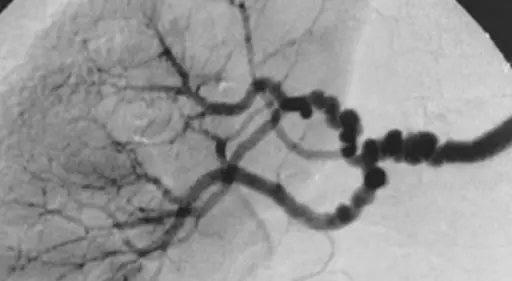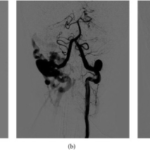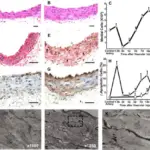Fibromuscular dysplasia is a condition of the blood vessel that mostly affects the large arteries and is characterized by twisting, enlarging, and narrowing of the blood vessels.
What is the Pathology of Fibromuscular Dysplasia?
The pathology of fibromuscular dysplasia is:
-Etiology: The cause of fibromuscular dysplasia is unknown but can be predisposed by hormonal changes, genetics, and smoking.
-Genes involved: Unknown.
-Pathogenesis: The sequence of events that lead to fibromuscular dysplasia is when blood vessels are weakened and movement as blood flow continues, it causes the blood vessels to twist several times and the weak walls of the blood vessels begin to bulge as the other part that has been deprived of blood begins to narrow due to its loss of function.
-Morphology: The morphology associated with fibromuscular dysplasia shows stenosis, bead-like appearance due to twisting, swelling.
-Histology: The histology associated with fibromuscular dysplasia shows collagen in the intima, thickened fibromuscular ridges, medial dysplasia, adventitial dysplasia, and intimal fibroplasia.
How does Fibromuscular Dysplasia Present?
Patients with fibromuscular dysplasia are typically females between 20-50 years old. The symptoms, features, and clinical findings associated with fibromuscular dysplasia include headache, dizziness, neck pain, weakness, numbness, intermittent leg claudication, and hypertension.
How is Fibromuscular Dysplasia Diagnosed?
Fibromuscular dysplasia is diagnosed by physical examination, history taking, cerebrovascular ultrasonography, CT scan, and MRI angiogram.
How is Fibromuscular Dysplasia Treated?
Fibromuscular dysplasia is treated by managing the symptoms as they present since there is no clear cause of the disease. Diuretics and antihypertensives may be helpful.
What is the Prognosis of Fibromuscular Dysplasia?
The prognosis of fibromuscular dysplasia is generally good. If cranial arteries are involved, then the prognosis worsens.



